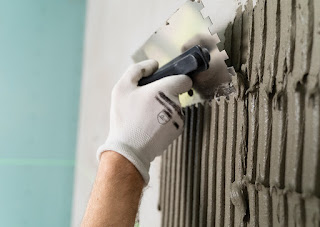Plaster sand, often regarded as
the unsung hero of construction materials, plays a pivotal role in achieving
smooth and durable surfaces in various building projects. While it might seem inconspicuous
amidst the array of construction materials, its significance cannot be
overstated. In this article, we delve into the indispensable role of plaster
sand, exploring its properties, applications, and the impact it has on the
quality of finished surfaces.
Understanding Plaster Sand:
Plaster sand is a fine aggregate
typically composed of finely crushed and graded sand particles. Its granular
composition is carefully engineered to meet specific size and texture
requirements essential for plastering applications. Unlike coarser aggregates,
plaster sand possesses a fine texture that ensures a smooth and even finish
when applied to surfaces.
Properties and Characteristics:
1. Particle Size Distribution: Plaster sand is meticulously graded
to ensure a uniform particle size distribution. This consistency facilitates
proper bonding with other materials and promotes a cohesive plaster mix.
2. Angularity and Shape: The angular and irregular shape of plaster
sand particles enhances interlocking, improving the overall strength and
stability of the plaster layer.
3. Cleanliness and Purity: High-quality plaster sand is free from
impurities such as clay, silt, and organic matter, which could compromise
adhesion and durability.
Applications in Construction:
Plaster sand finds widespread use
in various construction applications, primarily in plastering and rendering:
1. Interior Plastering: Plaster sand serves as the primary
ingredient in interior plaster mixes, applied to walls and ceilings to create
smooth and visually appealing surfaces. Its fine texture allows for precise
detailing and finishing touches.
2. Exterior Rendering: In exterior rendering applications, plaster
sand forms a protective layer over masonry surfaces, enhancing weather
resistance and durability while maintaining aesthetic appeal.
3. Decorative Finishes: Plaster sand is also employed in decorative
plaster finishes, including textured coatings and ornamental designs, adding
depth and character to architectural elements.
Achieving Smooth Surfaces:
The use of plaster sand is
indispensable for achieving smooth and flawless surfaces in construction. Its
fine texture and uniform particle size distribution contribute to the
following:
1. Smooth Application: The fine grains of plaster sand allow for
effortless spreading and application, resulting in a uniform thickness and
texture across the surface.
2. Improved Workability: Plaster sand enhances the workability of
plaster mixes, enabling contractors to achieve desired consistency and finish
with ease.
3. Minimized Surface Imperfections: The uniformity of plaster sand
minimizes the occurrence of surface imperfections such as cracks, voids, and
unevenness, ensuring a professional-quality finish.
Enhancing Durability:
In addition to imparting
smoothness, plaster sand plays a crucial role in enhancing the durability and
longevity of plastered surfaces:
1. Bond Strength: The angular shape and consistent particle size
distribution of plaster sand promote strong interlocking with binding agents
such as cement, lime, or gypsum, ensuring excellent bond strength.
2. Crack Resistance: Properly mixed plaster sand forms a cohesive
and resilient plaster layer that resists cracking and structural damage, even
under dynamic loads and environmental stresses.
3. Weather Resistance: Plaster sand-based plaster mixes exhibit
superior weather resistance, protecting underlying substrates from moisture
ingress, freeze-thaw cycles, and other external factors.
In conclusion, plaster sand stands as an
indispensable component in achieving smooth and durable surfaces in
construction projects. Its fine texture, uniform particle size distribution,
and inherent properties contribute to flawless finishes, improved durability,
and enhanced structural integrity. As construction practices evolve, the
importance of plaster sand remains unwavering, serving as a cornerstone for quality
craftsmanship and enduring architectural excellence.





No comments:
Post a Comment